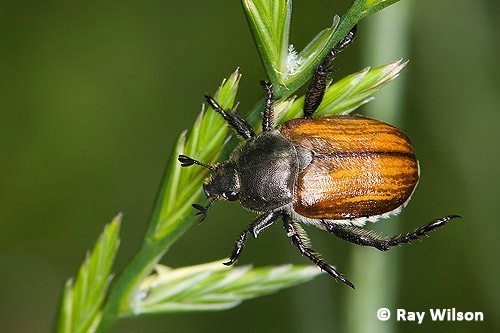
Scarabaeidae
Scarab Beetles & Chafers
This large family of around 20000 species worldwide, can generally be split into two main groups: the scarab dung beetles and the plant-eating Chafers. The first group are usually considered beneficial in nature due to their industrious removal of dung from the environment, while the latter group are mostly destructive, causing a great deal of damage to many agricultural plants both as adults and larvae.

Garden Chafer (Phyllopertha horticola) - Gwynedd, Wales - June 2008
Scarabs and chafers are mostly quite large beetles, and this family contains some of the biggest insects in the world, such as the Goliath and Hercules Beetles which can weigh up to 100g.

Cetonia cuprea - Trigrad, Bulgaria - June 2007
Some chafers exhibit one of the few known natural instances of the circular polarisation of light. The ultrasturcture of the cuticle causes the light reflected from its surface to be preferentially left-handed. Light, being part of the electromagnetic spectrum, normally takes the form of a transversly propagated wave. When it is circularly-polarised the electric field of the wave form rotates. This can be imagined to be represented as the light following the path of a screw, with a left-handed circularly-polarised photon being the same as a left-handed screw.

Oxythyrea funesta - Trigrad, Bulgaria - June 2007
The Scarabaeidae are mostly nocturnal insects, but some of the leaf chafers are also active during the day.

Hoplia sp. - Tazha, Bulgaria - June 2007
In Ancient Egypt, Scarab beetles were considered sacred and were revered as the earthly personification of the sun-god Khepri.

Hoplia sp. - Almaraz, Spain - May 2005

Tambopata, Peru - December 2008
Ray Wilson owns the copyright of all images on this site.
They may not be used or copied in any form without prior written permission.
raywilsonphotography@googlemail.com